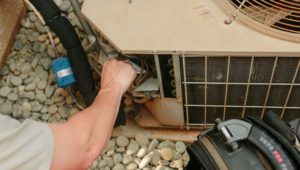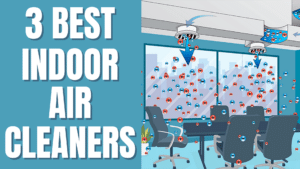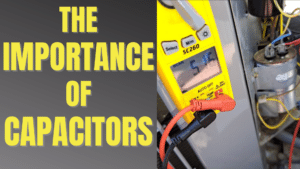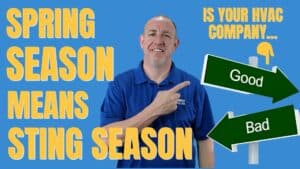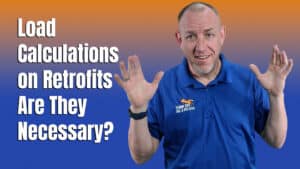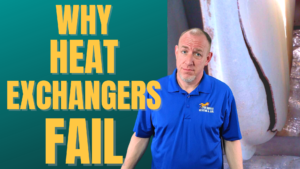A two-stage air conditioner is more efficient than a single stage. Single-stage units run at OFF or 100% capacity, two-stage air conditioners run at OFF, (approx.) 70%, and 100% capacity. So, you can probably imagine that a two-stage AC can save energy usage by about 30% because the majority of the time, two-stage air conditioning units operate in the first stage. But how can we tell if the two-stage compressor is running correctly? How do I troubleshoot a two-stage air conditioner compressor? That’s what we’re talking about today.
How It Saves Energy
Using only part of the scroll in today’s modern compressors, they don’t have to work as hard to keep the customer cool. By only using part of the scroll, energy usage goes down because the motor that turns the shaft isn’t working as hard since it’s not pumping as much gas as it would in 100% mode.
Same fundamentals as a single stage unit
To test or troubleshoot a two-stage air conditioner compressor is the same as you would try a single-stage compressor. The only difference is a compressor solenoid that sends the signal to the compressor to switch from first stage to second stage and vice versa. An energized compressor solenoid sends the compressor into second stage or “loaded.” Otherwise, it defaults to the “unloaded” position in the first stage if it’s not energized.
I already have a great video on how I troubleshoot a compressor, so if you need to start there, feel free to click on the card above. In this video, we want to figure out if the two-stage compressor can switch between the first and second stages.
Switching The Two-Second Stage Manually
After turning the AC on at the thermostat, you can manipulate the call for the first and second stage at the AC. The low voltage wires coming from the furnace inside tell the compressor to be in first stage or second stage. You usually have a common wire, a Y1, and a Y2 wire that connects to the same low voltage wires from the AC. Tying Y2 to an energized system that is only calling for single stage (Y1) can force it into second stage.
Check The Amp Draws
With a call for first stage, set your meter to amps and record the reading on the (black) common wire from the compressor. Keeping your meter there, switch to second stage by adding the unit’s Y2 wire to the wire to the Y1 connection. Record your amp draw there. It should be about 25% to 30% higher than the first stage reading.
Example: First stage amp draw is 7.4, second stage reads 10 amps would be normal if the RLA of the AC is anywhere between 15 and 20.
If the amp draws increased the compressor has successfully “loaded” into second stage. Remove the Y2 wire from the connection to Y1, and the system should fall back into first stage. The amp draws will pretty much go back to the same amperage it was the first time you read it.
Check The Rectifier
If this process doesn’t work the way it should, let’s just check to make sure the 24 volts is getting to the proper spot, the compressor solenoid. In our units, there’s a little black rectifier on the sidewall of the service panel. It has four terminals. Two of them are white wires that lead to the compressor solenoid. The other two are connected to the call for second-stage cooling or the Y2 wire connection.
At the rectifier, set your meter set to DC voltage and measure between the two white wires, and you should get about 15 to 27 volts DC with 24 volts applied to the rectifier. If you have 24 volts to the rectifier but don’t have the DC voltage leading to the compressor solenoid, replace the rectifier chip.



Bad Compressor Solenoid Or Internal Damage
If you do have the proper DC voltage at the base of the white wires at the rectifier, but the compressor solenoid is not switching the unit to second stage, either the compressor solenoid is bad, or the compressor’s internal parts are failing. In this situation, replace the compressor.
There’s not a lot of info out there on how to troubleshoot a two-stage air conditioner compressor. Hopefully, this will help you navigate through the process of determining if the compressor itself is bad or if it’s something upstream of it.
Thanks so much for reading and make sure you catch next week’s blog!
Fox Family Heating & Air serves Sacramento, Rancho Cordova, and all of Northern California. If you’re looking to schedule HVAC service in these areas, give us a call!



